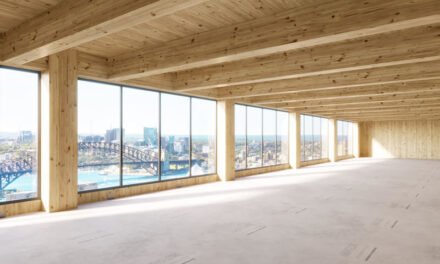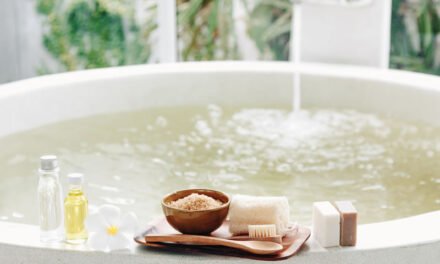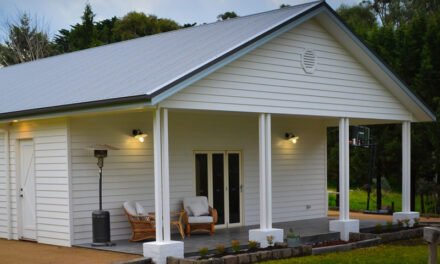A versatile choice for Australia’s construction and design needs. By Campbell McInnes
Australia’s rich and diverse ecosystem supports a variety of timber species, each bringing unique characteristics to the construction and design industries. In recent times however, there has been a trend towards locking up and ceasing the renewable logging of Australian Native Forests, which has already occurred in both Western Australia and Victorian states. This has created pressure on hardwood availability in Australia which is creating a trend of customers seeking the supply of hardwood from overseas. I spoke with Todd Beazley from Meyer Timber with regards to one hardwood that has been used in Australia for many years, that being Merbau / Kwila (Intsia Bijuga). Merbau and Kwila timber are one and the same and the name relates more to the origin. In Indonesia and Malaysia this timber is referred to as Merbau whereas in Papua New Guinea they refer to this species as Kwila. These days it is predominantly sourced from Indonesia and grows mainly in South East Asia, Papua New
Guinea, the Pacific islands, with some in Northern Queensland. Merbau timber has garnered significant attention for its outstanding properties, making it an exceptional choice for both structural and aesthetic applications. This editorial delves into the attributes of Merbau timber, its fire rating, outdoor resistance, availability and sizes, as well as its varied uses and structural properties.

Above: Merbau laminated beams can be used outdoors in many versatile structural applications.
DESCRIPTION AND CHARACTERISTICS
Merbau is considered a common medium-sized tree, that can grow up to 50 meters in height. Mature trees have large buttresses (wide roots from the trunk, like the fig tree). The bark is grey to light brown in colour. Leaves tend to spread out in groups of two or four are glossy green, generally oval in shape and tend to shed their leaves once a year, remaining bare for a few days. The Tannin is like a brown oily dye and when seasoned timber gets wet, the tannins can leach out and stain the surrounding surfaces that it makes contact with.
Merbau is resistant to termites and seasons well with kiln or air-drying, exhibiting very little shrinkage (tangential 2.5% and radial 1.2%) or movement (Unit movement tangential 0.30% and unit movement radial 0.19%), which makes this a very stable and attractive timber for the Australian climate and conditions. The grain of Merbau is usually interlocked or wavy, with an even type texture. It will finish well with stain, paint and polish although gum bleed is a possibility.
Merbau is a versatile timber product. It is utilised for larger-scale projects and general construction, along with common use for outdoor settings, barbeque trolleys, for joinery, flooring and fitting purposes. As it turns well it can be applied to more specialised work, such as cabinet making, musical instruments, boat building and carving.

Above: Merbau timber used inside in structural applications is both strong and beautiful.
STRENGTH, STRUCTURAL PROPERTIES AND APPLICATIONS
Merbau is renowned for its exceptional strength and durability. Classified as a hardwood, Merbau boasts a high density, averaging around 850 kg/m? when seasoned, which translates into impressive structural integrity. This strength makes Merbau suitable for heavy-duty construction projects, where robustness and longevity are paramount. In terms of specific strength metrics, Merbau when seasoned exhibits a Modulus of Rupture (MoR) of around 150 MPa, and a Modulus of Elasticity (MoE) of 18 GPa. These values indicate Merbau’s excellent capacity to withstand bending and deformation under load, making it an ideal candidate for beams, joists, and other load-bearing elements in construction. Beazley advised “there is a growing interest in Merbau, in the structural arena.”
In residential construction, Merbau has had a place in the outdoors when it is often seen being used in decks and pergolas. However, with the increase in enquiries for more structural sizes, Beazley explained “Meyer’s have increased the Merbau range and carry good stock of finger jointed and or laminated Merbau, in GL17 (the 140 and 190mm posts are GL13), which we have span tables available for” Furthermore, he added “since the ceasing of logging of Native forests in Western Australia and Victoria the interest in Merbau has definitely increased with the main area of interest being in the larger profiles, particularly the F27 range.”
Meyer’s carry a large stock holding of solid F27 in sizes of 90×90, 90×42, 140×42, 190×42, 240×42 and 290×42 up to 6.0 meters in length.
In more industrial applications, Merbau’s high strength and load-bearing capacity make it suitable for bridges and heavy-duty frameworks. Where Merbau has been utilized in the construction of timber bridges, its robustness and resistance to the elements ensure long-lasting performance. Merbau is also used in boatbuilding.
RESISTANCE TO OUTDOOR ELEMENTS
In terms of Durability (reference to heartwood only), Merbau is considered to have a durability rating of a) Moderate (5-15 years) for In-Ground use and b) High (more than 40 years) for above ground use.
One of Merbau’s standout features is its exceptional resistance to outdoor elements. The timber’s ability to be machined into various profiles allows for creative and functional uses. Its natural oils and high density contribute to excellent resistance to decay and termites. This makes Merbau particularly suited for outdoor applications such as decking, cladding, gazebos and outdoor furniture. When treated and maintained correctly, Merbau structures can withstand harsh weather conditions and retain its structural integrity and aesthetic appeal for decades.
FIRE RATING AND SAFETY
Fire safety is a critical consideration in Australian construction, especially given the country’s susceptibility to bushfires. Merbau timber stands out with a commendable fire rating, classified as BAL-29 (Bushfire Attack Level). Beazley said, “this rating signifies that Merbau can endure significant fire exposure without igniting quickly, thereby providing a safer option for buildings in fire-prone areas.” The high density and natural oils in Merbau contribute to its fire-resistant properties, offering peace of mind to builders and homeowners alike and is another reason why Merbau is embraced in Australian construction.

Above: Meyer’s keep a wide range of sizes, profiles and lengths in Merbau giving architects flexibility.
RANGE OF SIZES, LENGTHS, AND PROFILES
The versatility of Merbau timber is further enhanced by its availability in a wide range of sizes, lengths, and profiles. Commonly available dimensions range from small sections used in handrails, and joinery elements to large beams. Lengths can vary significantly, Meyer’s keep lengths up to 7.8 meters in some products, catering to both small-scale projects and extensive constructions. Beazley said, “the Merbau range that Meyer’s stock includes sizes that can be used for:
- Decking: Merbau decking is popular for its aesthetic appeal and robustness, as well as the low shrinkage rate, which makes it ideal for outdoor decking.
- Posts: Strong and durable, Merbau posts are used in both structural and decorative applications.
- Laminated: Laminated Merbau timber provides enhanced stability and strength, suitable for various construction projects.
- Finger Jointed: This technique is used to create longer lengths of timber from shorter pieces, ensuring efficient use of the wood and consistent quality.
- Cladding: Merbau cladding is favoured for its rich colour and durability, enhancing the exterior appearance of buildings.
- Dressed Boards: These smooth boards are used for interior and exterior applications, providing a refined finish.
- Handrail Components: Merbau’s strength and aesthetic appeal make it a preferred choice for handrails in both residential and commercial settings.
- Stairs: Due to the strength, colour and ability to finish in either stain or paint, staircase can be either for internal or external uses.
- Flooring: Merbau is frequently used for flooring, where its rich, reddish-brown adds warmth and elegance to interiors. The timber’s hardness ensures it withstands daily wear and tear, making it an excellent choice for high-traffic areas.”
The range of options ensures that Merbau can be tailored to suit specific design aesthetics and functional requirements.
Beazley spoke about the service Meyer’s provide, “customer service is a high priority for Meyer’s, we offer in-house timber designers and timber engineers to assist with small and large projects. We offer our full range of merbau in job lots, the customer can order a mix of sizes and lengths the builder requires for their order. All orders are packed to reduce the chance of damage in transit and on site. Our laminated Magna range has a 15-year guarantee and is certified by the GLTAA,” he added.

Above: Pre-piled Merbau is ideal outdoors as it helps reduce the sap from leaching.
PRE-OILED MERBAU
Another part of the Meyer’s Merbau range is the pre-oiled range. Beazley advised “the pre-oiled Merbau is also an area of great interest that is growing in popularity. Pre-oiled decking is becoming very popular.
Users see the big advantage not only in saving time, but also having the underneath side of a deck pre-oiled is wonderful as this helps to seal the decking timber, which many users simply don’t normally do!” Beazley added “the other significant advantage of the pre-oiled Merbau is that it reduces the bleeding/leaching from the timber, which is a huge benefit.”
Meyers have increased their pre-oiled range to include:
- A range of solid decking profiles, available in random length packs to 5.7m
- Solid Merbau 90×90 posts up to 6.0m
- Solid Merbau F27 in set lengths up to 6.0m
- Laminated posts 90×90 up to 290×290
- Laminated beams 70×32 up to 320×65
- Finger Jointed screening pre-oiled sizes 18×18, 32×18, 42×18, 70×19, 90×19, 140×19.
COMPLIANCE AND AVAILABILITY
Meyers take compliance and sustainability very seriously. They carry out due diligence on all timber suppliers they use and communicate with them on a regular basis.
Beasley said, “Meyer’s have a close relationship with their suppliers, and we visit the mills in Indonesia often to ensure the products we are buying are of high quality and sustainably sourced.” He added,
“Meyer’s ensure every container has the correct certification.” Currently there seems to be an increase in the availability of FSC Merbau. Due to the ongoing relationships, Beasley believes Meyer’s are well positioned to grow with the Australian market as the demand in Merbau increases.
CONCLUSION
Merbau timber stands out as a premier choice in Australia’s timber market, thanks to its superior strength, fire resistance, outdoor durability, and versatile range of sizes and profiles. Its structural properties enable its use in a wide array of applications, from residential flooring and decking to industrial construction and bridges. As the construction industry continues to prioritize sustainable and durable materials, Merbau’s natural resilience and aesthetic appeal solidify its position as a preferred timber choice in Australia.
For builders, architects, and designers seeking a reliable, beautiful, and enduring material, Merbau timber offers significant benefits. By leveraging Merbau’s unique properties, Australia can continue to build resilient, safe, and visually stunning structures that stand the test of time.
Merbau has been popular in Australia now for many years, however with Australian hardwoods becoming less available through Native Forest lockups, Merbau is one of those species which is likely to further grow in popularity.
For more, visit www.meyertimber.com.au












